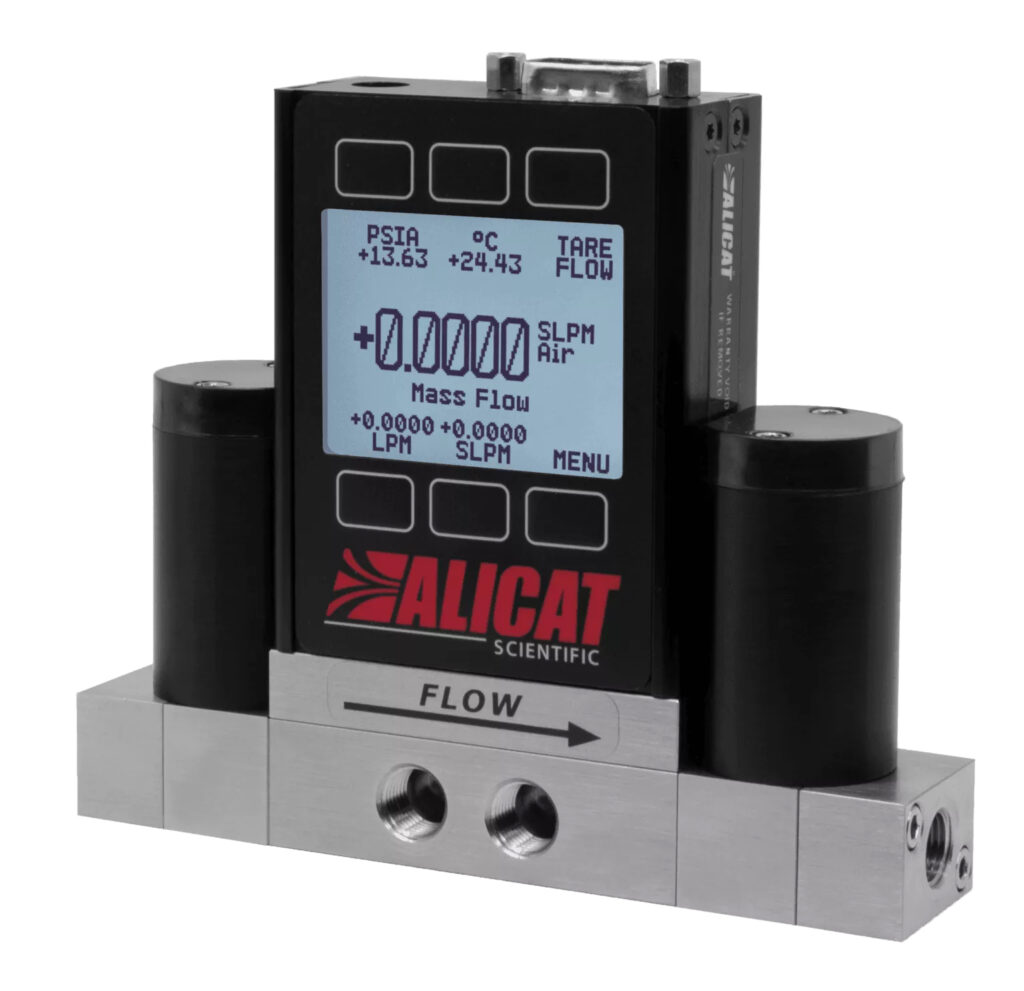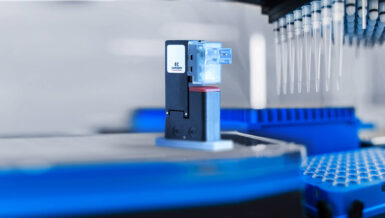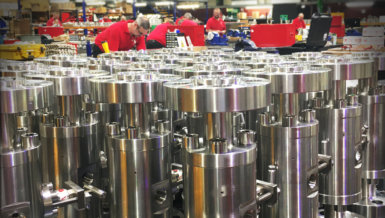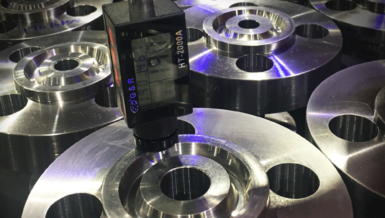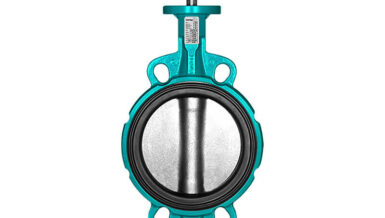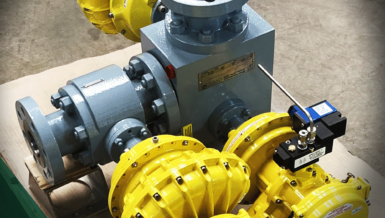We work closely with our customers to understand their problems and find straightforward solutions to ensure mission-critical components and life-support systems are functioning as needed.
Our customers have used mass flow and pressure instrumentation in all kinds of aerospace projects, including the following:
- Ensuring the oxygen masks in military and commercial airplanes flow the correct amount of gas and meet safety regulations. To do this, bidirectional mass flow controllers simulated human breathing while monitoring system pressure.
- Flowing water to support and monitor cooling systems in pressure suits and propulsion systems. These customers used liquid flow instruments customized to be lightweight and compatible with space suits.
- Controlling the lift of high-altitude balloons used in experiments to study and understand weather patterns and various aspects of the upper atmosphere. This application utilized mass flow controllers to fill the balloons with hydrogen or helium.
- Assisting with the pitch, roll, and yaw on a rocket launch delivering an astronomical telescope satellite. Pressure controllers with high resolution control and smooth ramping were used to aim the scope without allowing the imaging system to blur.
- Testing instrument performance in harsh Martian conditions by combining mass flow and pressure control to replicate the atmosphere on Mars.
In this article, we will dive a little deeper into an application where a customer needed to leak test stands for rocket engines.
Challenge: Valve leak test stands and characterization for rocket engines
Leak testing takes place in a lab environment on Earth. Test stands include both mass flow and pressure controllers that are able to detect extremely small leak rates and volumes. The pressure requirements for testing rockets are much too high for standard pressure controllers alone.
Dome-loaded regulators can handle high pressures and high flow rates and are therefore often used to control pressure in testing rocket components. However, these dome-loaded regulators experience significant hysteresis which can result in a non-repeatable process.
Solution: Repeatable pressure control and near-atmospheric flow measurement
To avoid hysteresis and guarantee repeatability, the team used high-pressure-rated dual valve pressure controllers (PCDs). These are able to repeatably control pressures up to 3,000 PSI by using a proportional control valve optimized using onboard PID tuning.
The pressure controllers were additionally paired with low-pressure drop flow meters. The PCD was used to control pressure at the inlet port of the valve under test, and the flow meter was installed downstream to measure the leak rate through the valve. These meters are able to detect even the smallest of leaks at near-atmospheric pressures. Additionally, their multi-gas calibrations allowed for easy switching between the two most common leak testing gases – nitrogen and helium – with no change in accuracy or need for recalibration
To meet the needs of the industry, all Alicat pressure and mass flow devices can be configured with AS5202 ports, for easy system integration.



